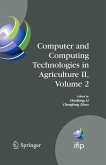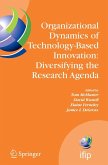New paradigms for communication/networking systems are needed in order to tackle such emerging issues as heterogeneity, complexity and management of evolvable infrastructures, thus requiring approaches that are both task- and knowledge-driven. The networking and seamless integration of concepts, technologies and devices in a dynamically changing environment poses many challenges to the research community, including interoperability, programmability, management, openness, reliability, performance, context awareness, intelligence, autonomy, security, privacy, safety, and semantics. Inspired by biological systems, autonomic communication envisions communication systems that can organize, configure, optimize, protect, and heal themselves with minimal involvement of human administrators.
Autonomic Communication explores conceptual models and associated technologies that will uphold the vision of autonomic communication where devices and applications blur the boundaries between virtual and real worlds as they seamlessly interconnect, intelligently cooperate, and autonomously manage themselves.
Written by leading international researchers, the contributions give testimony to the challenges and prospects of this rapidly growing area. The volume is composed of chapters covering a wide range of issues related to autonomic communication.
Part I Autonomic Communication Infrastructure
Part II Autonomic Communication Services and Middleware
Part III Applications to Ad-Hoc (Sensor) Networks and Pervasive Systems
Autonomic Communication provides a vital reference to both researchers and practitioners, particularly those in networking, future and emerging technologies, mobile systems, autonomous technologies, computational intelligence, and embedded systems. The book is also a useful tool for graduate students and senior undergraduate students in courses on networking, autonomous management web, services, network application modeling, knowledge-based systems, and evolutionary software.
Autonomic Communication explores conceptual models and associated technologies that will uphold the vision of autonomic communication where devices and applications blur the boundaries between virtual and real worlds as they seamlessly interconnect, intelligently cooperate, and autonomously manage themselves.
Written by leading international researchers, the contributions give testimony to the challenges and prospects of this rapidly growing area. The volume is composed of chapters covering a wide range of issues related to autonomic communication.
Part I Autonomic Communication Infrastructure
- Social-based autonomic routing in opportunistic networks
- A Collaborative Knowledge Plane for Autonomic Networks
- A Rate Feedback Predictive Control Scheme Based on Neural Network and Control Theory for Autonomic Communication
Part II Autonomic Communication Services and Middleware
- Hovering Information - Self-Organizing Information that Finds its Own Storage
- The CASCADAS Framework for Autonomic Communications
- Autonomic Middleware for Automotive Embedded Systems
- Social Opportunistic Computing: Design for Autonomic User-Centric Systems
- Programming and Validation Techniques for Reliable Goal-driven Autonomic Software
Part III Applications to Ad-Hoc (Sensor) Networks and Pervasive Systems
- Autonomic Communication in Pervasive Multimodal Multimedia Computing System
- Self-healing for Autonomic Pervasive Computing
- Map-based Design for Autonomic Wireless Sensor Networks
- An Efficient, Scalable and Robust P2P Overlay for Autonomic Communication
- Autonomic and Coevolutionary Sensor Networking
Autonomic Communication provides a vital reference to both researchers and practitioners, particularly those in networking, future and emerging technologies, mobile systems, autonomous technologies, computational intelligence, and embedded systems. The book is also a useful tool for graduate students and senior undergraduate students in courses on networking, autonomous management web, services, network application modeling, knowledge-based systems, and evolutionary software.
Dieser Download kann aus rechtlichen Gründen nur mit Rechnungsadresse in A, B, BG, CY, CZ, D, DK, EW, E, FIN, F, GR, HR, H, IRL, I, LT, L, LR, M, NL, PL, P, R, S, SLO, SK ausgeliefert werden.









